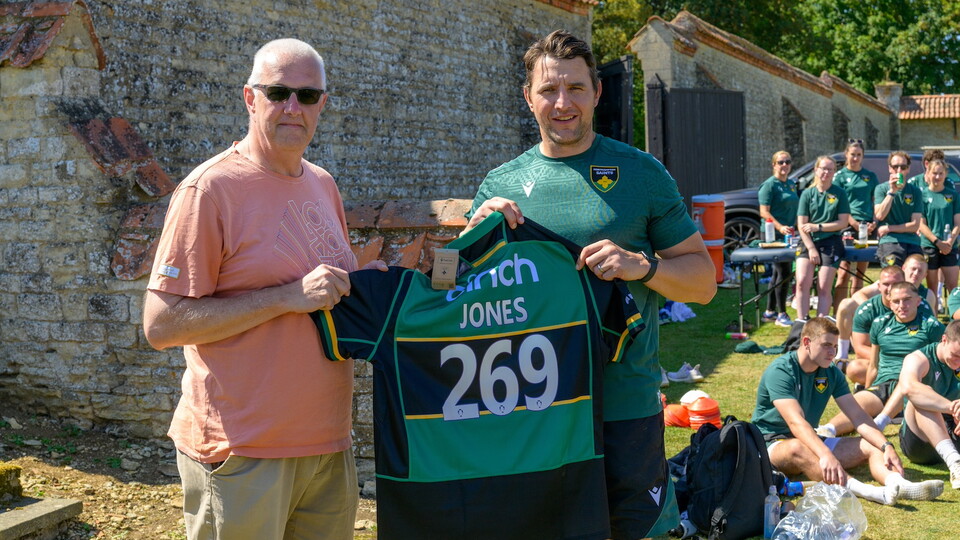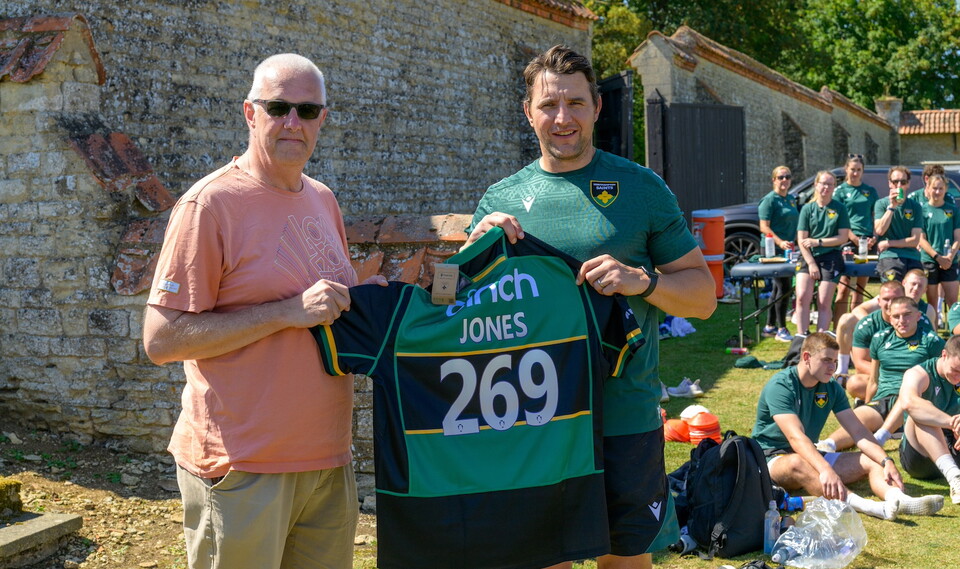More than 200 names have been added to the list of former Northampton Saints players thanks to the painstaking research of one individual over an 18-month period.
Back in 2018, at the request of [former Director of Rugby] Chris Boyd and [current Director of Rugby] Phil Dowson, a list of over 2,000 names was created featuring every player who had represented the Club from 1895 onwards. Each of them was awarded a historical player number, and their place cemented in the archives.
A pub fire in 1895 unfortunately destroyed Club records prior to that date. As a result, some of the earliest players from before 1895 were not included in the previously published list.
Step forward Saints Season Ticket Holder, Tim Jones. During the lockdown periods of the global pandemic, the retired IT worker used newspaper archives and tools such as Ancestry and FindMyPast to scour nearly 1,500 match reports between 1840 and 1895.
Including players who played for St James’s End Mutual Improvement Class, St James’s End FC and Northampton St. James, Tim documented 269 people who played for Saints between 1882 and 1895.
Of these, 34 already had Saints numbers, but the remaining 235 players have now been awarded Roman Numerals – which will supplement the existing historical numbers, with no changes being made to the original numbers list which starts with Saint #1 E.T. Abell whose debut came in 1895.
Tim was inspired to throw himself into this monumental undertaking after supporting his wife Claire – who is well known to Saints supporters as the red-hat wearing photographer – when she led a research project into the Mobbs’ Own volunteers back in 2019-2020.
“I just found that whole process absolutely fascinating,” said Tim. “I wanted to see if we can use some of those same tools to find some of the early players before 1895 when the Club’s records were lost and give them the recognition they deserved.
“One of those players was Teddy Dunkley (VII) who played in the very first match I found a report for in 1882. He was one of the great stalwarts of those early days. He played 80 times for St. James’ End, was Club Captain for a while and served on the committee for many years. I believe that it was his pub in town where the records were lost in the fire. Now he has a player numeral, and we have his playing record.
“I was interested in that early history of football in the town and how Saints came to be the predominant club. At one point there were 20 clubs regularly playing in and around Northampton. As I read through the historical record, I could see that the Unity Club was the ‘top’ club in town, whilst St. James struggled to get good fixtures or much attention from the press.
“I always felt there was this sort of posh-boy thing going on, with Unity the establishment club, with all the connections, compared with the very working-class background of St James. In the end, Unity went bust due to hopeless financial mismanagement and St. James picked up the pieces.”
The key publications that were used for the research were the Northampton Daily Reporter (now the Chronicle and Echo) and the Mercury.
Having started his research by using the search terms ‘Northampton’ and ‘football’, Tim soon found himself plunged into a project that he believes was around ‘six to eight months of work’ across the research period, though Claire insists it was much more than that!
“I have found myself getting really involved with some of the names,” he said. “William Slingsby Godfrey (CII) for example who has an incredible life story worth a book of his own, or ‘Billy’ Moring who played at half-back more than 120 times.
Like his time following the men in Black, Green and Gold, there were plenty of highs and lows experienced during the process.
While adept in the world of spreadsheets from his many years working for the Ford Motor Company, the Cambridgeshire resident did encounter a few stumbling blocks.
“My slight tendency to worry too much over the detail was an issue,” he said. “I have got records from all the town clubs who played at the time. Although I was mostly interested in the Saints stuff, I would end up recording all the players from a match report of St Michael's versus St Lawrence and the only reason I am doing it is for completeness of the record.
“A new club might pop up for six weeks and I would have to open a new spreadsheet and do all the prep work and admin around it, then they would disappear again before we got through to the end of the season. I found that a bit frustrating.”
Alongside gathering the names and playing records for his project to be added to Saints’ archives, there were other discoveries about the sport itself along the way.
“In the early games, the eight-man forward pack had not been really fixed,” said Tim. “They often played with three half-backs or with someone that they called a wing forward who was halfway between a forward and a three-quarter. These wing forwards were much looser and played in the three quarters.
“The scoring system is wholly different. The only way to score in those earliest matches was to kick a goal. You were only allowed to kick a goal if you scored a try. There were ‘minor points’ available for tries, touch-downs (forcing the defence to ground the ball behind their own try line) and several other actions, but these were only relevant in the event of a tie. Many of the earliest matches were played on the Racecourse, but I have no idea if they had any posts or how they organised that!”
Tim’s drive to create a meaningful record of those that played for Northampton Saints in the early years is now ready for public consumption.
“I have been waiting for this day,” he smiled. “Even though it is really niche; a huge amount of effort has gone into it.
“That was what was missing – and that’s not to criticise the existing list, that was the best record that was available. I love the heritage player list, this is an extension of it. When I started, it wasn’t obvious that it was going to work at all. I think the results are way beyond what I expected. There may well be another extension should that book ever turn up!”
Northampton Saints Club Historian, Graham McKechnie, added: “This is a really important and interesting piece of work that Tim has done. It’s been an extraordinary labour of love, ploughing through thousands of pages of newspapers to find the match reports which are often quite sketchy. And as a result of this work, the early Saints players are rightly being acknowledged.
“Without these men, we simply wouldn’t have the Club, so we are indebted to their commitment and vision. Thanks to this research we have their names but also we have a glimpse into their lives and to Northampton society in the 1880s and 90s.
“Due to the nature of these early match reports, we cannot definitely say that the list of these players is complete or absolutely accurate. Other names are bound to pop up and can be added as necessary. But thanks to Tim’s work we now have a much clearer idea of who these pioneering Saints players were.”



